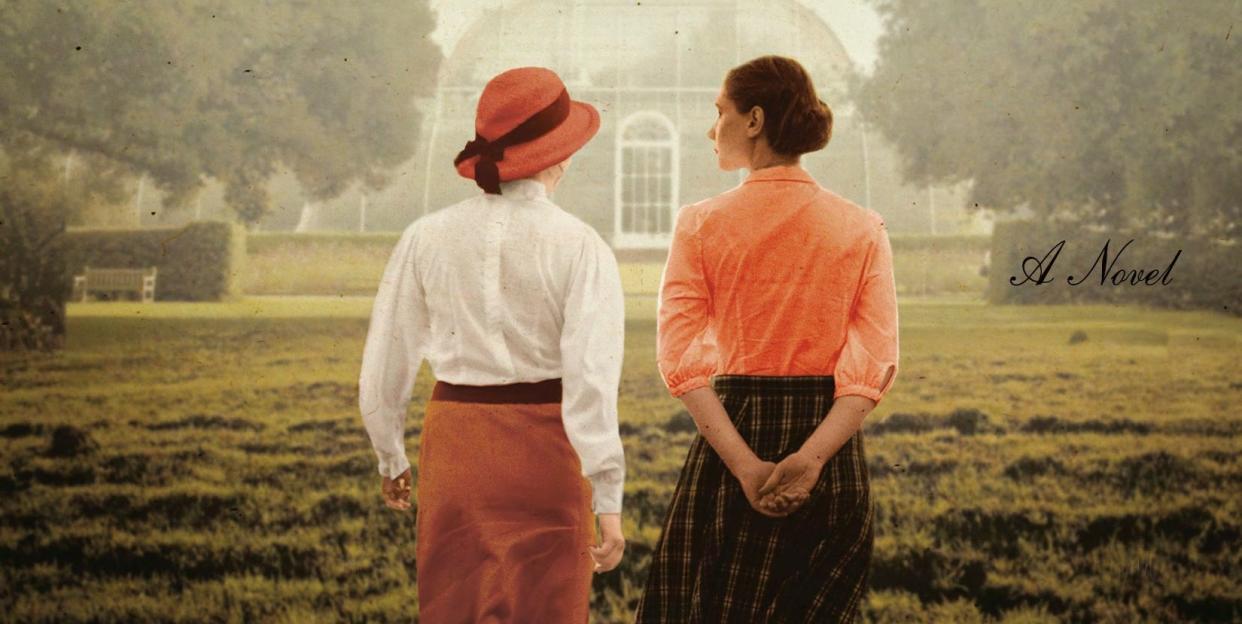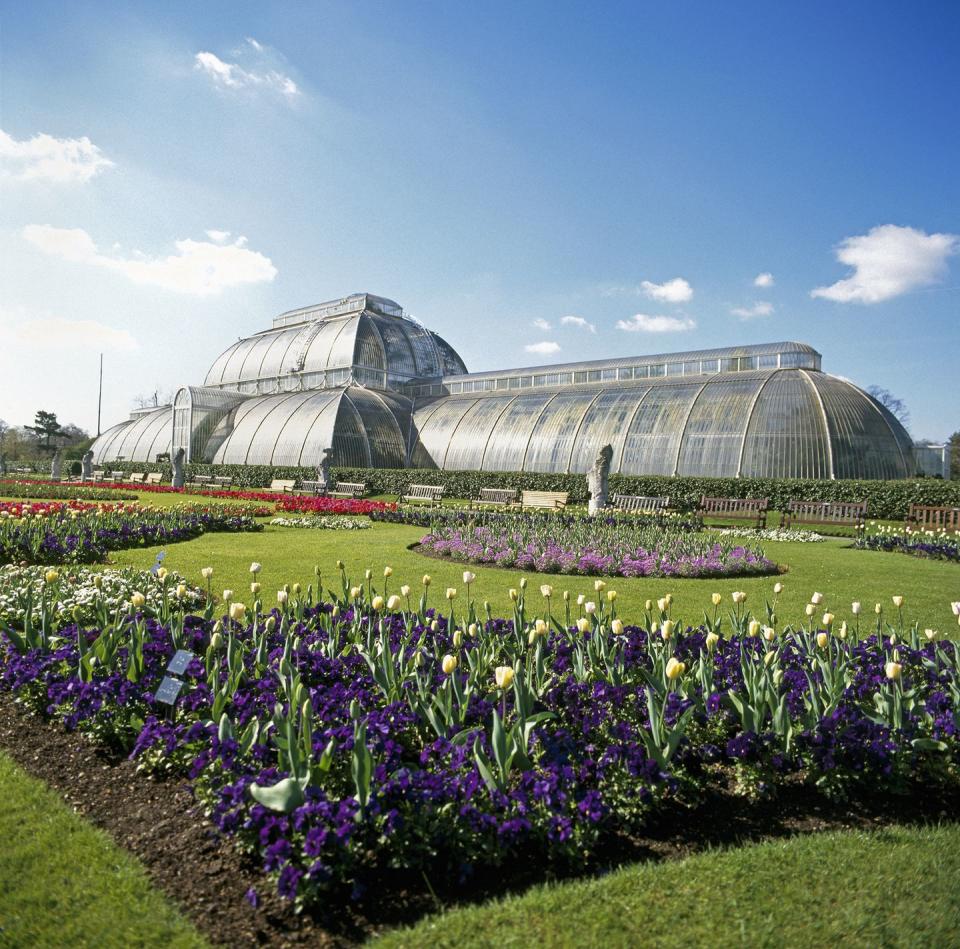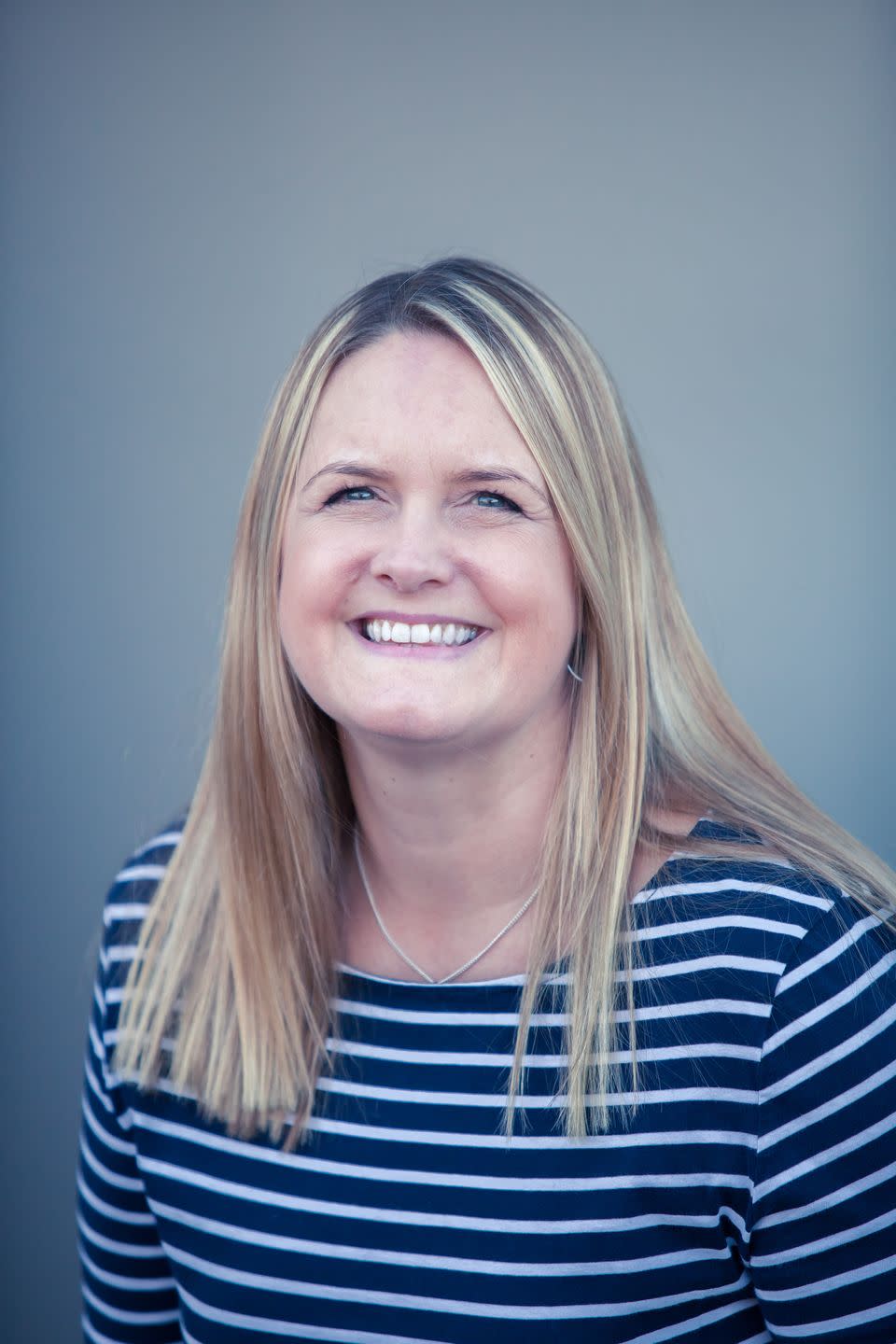Author Posy Lovell Shares the Details Behind Her New Novel, 'The Kew Gardens Girls'

“Hearst Magazines and Verizon Media may earn commission or revenue on some items through the links below.”
For author Posy Lovell, the gardens she explored as a child with her grandfather were "Narnia, the Enchanted Wood, and the Secret Garden all rolled into one. I loved the earthy smell of the greenhouses and the way my skin felt when we stepped inside the warmth after being out in the chilly Edinburgh air." The Royal Botanic Garden was her grandad's favorite place to explore, and it became the site of many a happy childhood memory for her. So it's no surprise that she's returned to those nostalgic roots for her new novel, The Kew Gardens Girls.
For Lovell (an admitted city girl at heart), the green spaces tucked inside the buzz of city life offer more than just much-needed respite—they're a source of inspiration, especially when the magic of the garden met the fascinating history of the Suffragettes, which Lovell had researched previously. We sat down to chat with the author about the history behind The Kew Gardens Girls and how she set out to merge the stories of her nuanced characters with the intersections of WWI, the stunning 18th-century Kew Gardens (shown above), and the Suffragettes.
AL: Tell us a little about how the idea for this story came to you. It’s such an interesting time in history!
PL: I had written a book about the Suffragettes set in 1910, which was just when they were really beginning to organize and fight for voting rights in the U.K. There was so much of their story left to write about that I found I was a bit reluctant to say goodbye to these women. I remember commenting at the time that if I only wrote about the Suffragettes for the rest of my career I wouldn’t get bored. They’re just amazing.
In the course of my reading, I came across a newspaper report about the Suffragettes targeting Kew Gardens, and it seemed really jarring. Burning down the tea pavilion—which, by the way, was owned and run by a woman—and vandalizing the orchid house seemed so at odds with their other efforts. Up until then I’d been fully on board with everything the Suffragettes had done, but now I started to think perhaps they made some mistakes, and that really interested me. I started reading more about Kew Gardens and discovered the female gardeners who joined in WWI were paid the same as the men, and suddenly I had the seeds of a story.
AL: What was the research like? I imagine it was considerable, considering all the different historic elements you’ve woven into the story with the war, the Suffragettes, and the gardens.
PL: Considerable, but so enjoyable. I was allowed to spend a day in the archives at Kew, which was a wonderful experience. I got to read the application letters written by the female gardeners, and I loved seeing their handwriting and almost 'hearing' their voices.
Like I said, I’d researched the Suffragettes before, but while my previous book had concentrated on their early campaigning, this was a few years later. I had to research the White Feather campaign, which I didn’t know a whole lot about, among other things. And I had to learn about gardening! I really enjoyed learning about the language of flowers, which was so magical and will stay with me forever, I think.

AL: Female friendships are at the heart of this story. How did you decide to weave together the Suffragettes’ story with the that of the gardens?
PL: I believe that women’s strength lies in our tendency to support others. I think you can see it so clearly in how women kept the country going during the two World Wars and also with the Suffragettes’ battle for equal rights. But I think there is a tendency to sugarcoat both ‘fights’ and to think everyone simply linked arms and got on with it, smiling bravely through adversity. I really dislike when women are talked about like one big group, as though we are in agreement about everything, and so finding out about the tension within the Suffragettes piqued my interest. I liked that while they agreed on some things, they disagreed on others. And I liked the idea of someone who was responsible for an act of vandalism in the gardens also being the one to nurture it, as Ivy does. The two parts of the story came together very naturally.
AL: Do you have a connection to nature yourself?
PL: No! I’m a real city girl. I was born in Edinburgh and have lived in London since I was a little girl. But I do really love green spaces in cities. Where I live in southeast London is just 25 minutes on the train to the city centre, but we are surrounded by woods and parkland. I often run in the woods, and there’s a spot I especially love where you can’t see any houses or roads, and I always think, How can this be London? But it is! I like that mix of city life and green space, which is of course exactly what Kew Gardens is. I grew up visiting the Botanic Gardens in Edinburgh with my grandfather, and, similarly, that’s close to the city centre but a world away when you step inside. London is so blessed with its parks, and Kew Gardens is just a wonderful place to visit.
AL: I love how some of the characters’ viewpoints change over the course of the story as they grow to know and care for the other characters. They felt very developed and nuanced because of this. Did you plan this from the beginning, or did it happen organically?

PL: It happened quite organically actually. I found it quite hard, at first, to offer all the viewpoints, but as the characters came to life it became easier. When Bernie and Louisa have their conflict, I flip-flopped constantly between thinking Bernie was right and believing Louisa had a point. I’m still not sure who I agree with!
AL: Speaking of, Bernie is such an interesting character, as a Quaker and conscientious objector to the war. Can you talk about his character? Was it important to you to include this viewpoint in the story?
PL: I love Bernie! I picture him as a kind of Eddie Redmayne–esque, floppy-haired, sweet-natured man. I read Pat Barker’s Regeneration trilogy years ago, and since then I’ve always been interested in the conscientious objectors. They were so quietly sure of themselves; brave in their own way. And the Quakers are the same even now, supporting minority groups and standing up for what’s right. It’s a very gentle kind of activism and very different to the Suffragettes’ fight, though just as inspiring. I really wanted to include a conscientious objector because their stance isn’t always easy to understand. And when I read more about Emmeline Pankhurst’s involvement in the White Feather campaign, it seemed an obvious way to create more tension between my characters. And also to show that people aren’t all good or all bad. Bernie and Louisa both have things to learn from one another.
AL: What books do you love to recommend?
PL: That’s a hard question! I read all sorts of fiction and some nonfiction too. I read everything by Stephen King, who I love, and Jilly Cooper. Some of the best books I read last year were Hamnet by Maggie O’Farrell, Where the Crawdads Sing by Delia Owens, Grown Ups by Marian Keyes, and The Lost Man by Jane Harper.
AL: Are you working on anything new we can know about?
PL: I’ve just finished the sequel to my Kew Gardens story. It’s set during the Blitz in WWII, when London was being bombed every night, and has a few familiar faces from The Kew Gardens Girls. I’m also reading about Frances Hodgson Burnett, who wrote The Secret Garden, as I’m hoping to write something about her. She had the most amazing life.
Grab a copy of The Kew Gardens Girls online and at local bookstores April 20, 2021.
You can also read along with us in the Veranda Sip & Read Book Club, where we select one book a month and chat with the author live on Instagram!
You Might Also Like

